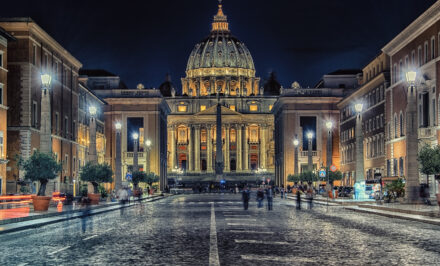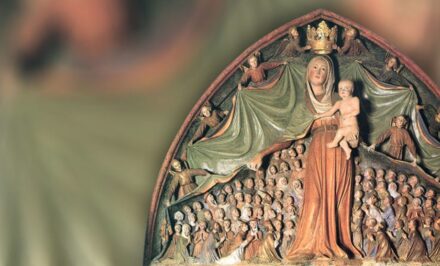 Fr. Nicolás Schwizer. The great canticle of the Blessed Virgin on her visit to the home of St. Elizabeth is the Magnificat. It expresses her great joy for all God has done in his humble servant.
Fr. Nicolás Schwizer. The great canticle of the Blessed Virgin on her visit to the home of St. Elizabeth is the Magnificat. It expresses her great joy for all God has done in his humble servant.
![]()
In the canticle – in reality – Mary says few things which are new. Almost all her phrases find numerous parallels in the Psalms and other books of the Old Testament. But – as a theologian writes – if the words come in large part from the Old Testament, the music already belongs to the new covenant. In the words of Mary, we are already reading an anticipation of the Beatitudes and a vision of Salvation which breaks all established molds. In the canticle, Mary says things which should make us tremble.
The best picture we have of Mary
The canticle is like a mirror of Mary’s soul. It is, undoubtedly, the best picture we have of Mary. Her canticle is both beautiful and simple…..without literary ostentation, without great poetic images, without anything extraordinary being said in it. And, nevertheless, how impressive are its words!
The things of God proceed from joy and end in enthusiasm.
It is, above all else, an explosion of joy. The things of God proceed from joy and end in enthusiasm. God comes to fill, not to empty. But that joy is not human. It comes from God and ends in God. Mary’s joy is not of this world. She does not delight in her human maternity, but in being the mother of the Messiah, her Savior (M. Thurman)…..not of having a son, but in that Son being God.
Therefore, Mary experiences herself fulfilled. Thus, She dares to prophecy that all generations will call her blessed because She has been looked upon by God. We Westerners will never understand what it is for an Easterner “to be looked upon by God.” For this – until today – the Saints transmit sanctity through their gaze. The gaze of a man of God is a blessing. So much moreso if the one who gazes is God!
Her vision of history
The fourth stanza of Mary’s canticle summarizes her vision of history. And it is reduced to only one idea: the Kingdom of God, which her Son brings, has nothing to do with the kingdom of this world.
The visible sign of the coming of the Kingdom of God
And this is the subversive part of the canticle which we cannot ignore: for Mary, the visible sign of the coming of the Kingdom of God is the humbling of the proud, the defeat of the mighty, the exaltation of the humble and the poor, the emtying of the rich. These words cannot be diminished: Mary announces what her Son will preach in the Beatitudes: that He comes to bring God’s plan which will modify the structures of this privileged world of those who are strongest and most powerful.
Classes of soul
The poor and the humble of whom Mary speaks are those who only count on God in their hearts: the humble, those who fear God, those who find refuge in Him, those who seek Him, the broken hearts and the oppressed souls. Mary does not speak so much about social classes, but especially of the classes of souls. And who can say of himself that he is one of God’s poor?
Mary does not only speak of material poverty or spiritual poverty. She speaks of the total of the two. And at the same time, She offers a program of reform of the injustices of this world and of elevating the eyes towards Heaven. They are two essential parts of her Magnificat and of the Gospel, two inseparable parts.
A revolutionary Hymn
Mary, in the Magnificat, does not separate what God has united through her Son: the temporal problems from the celestial problems. Her canticle is, truthfully, a revolutionary hymn, but of a total revolution. Therefore, Mary can preach that revolution with joy.
I think that it is necessary that all of us also sing with her, and like her, daring to say the whole truth which Mary announces.
Virtual Retreat wiht Fr. Nicolás
![]()














Lovely and profound thoughts to ponder in one’s heart.. Thank you Father Nicholas!